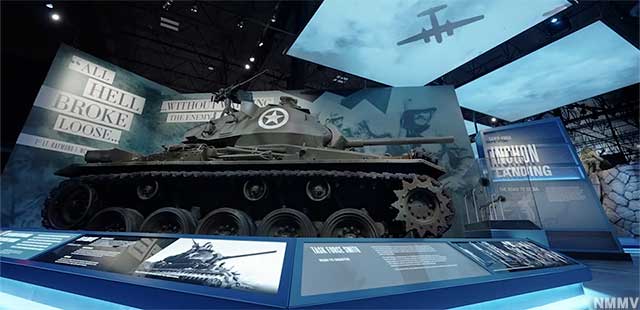
America's small tanks were outgunned in the early days of the Korean War.
National Museum of Military Vehicles
Dubois, Wyoming
Dan Starks bought a World War II tank in 2014. He drove it in the local 4th of July parade and liked it, so he bought another tank. And then another. Less than ten years later, Dan had amassed over 500 military vehicles, the largest private collection in the world. Wheeled vehicles, tracked vehicles, floating vehicles, flying vehicles.
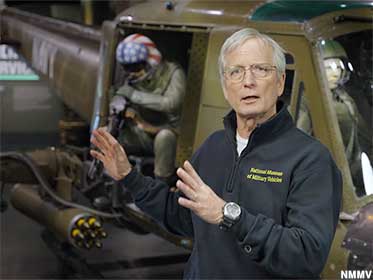
Museum owner Dan Starks explains helicopter warfare in Vietnam.
"There are people who have a lot more money than I do," Dan said, "but they buy a big yacht or an airplane or an island." Dan instead spent 100 million dollars to build his own museum. It was, he told us, the only way that he could share his vehicles with the public in the way that he wanted to. "There's nothing else like it," he said of the museum. "Everything in it came out of my passion. Otherwise it wouldn't be there."
(Dan may be wealthy, but his sentiments would be familiar to working-class Sherry Groom at the Troll Hole, or to Ed Pany at the Cement Museum, or to any one of countless museum owner-collectors that we've known over the years).
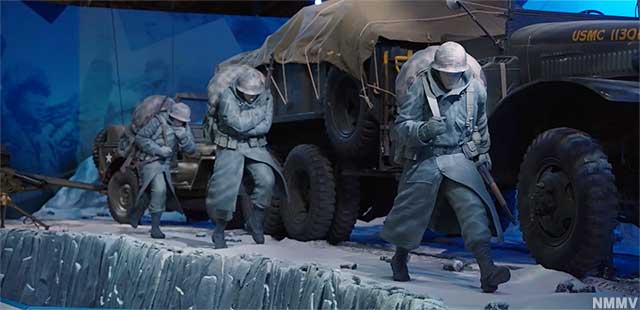
Life-size diorama recreates the 1st Marine Division's frigid retreat from the Chosin Reservoir.
Dan compared his museum to the U.S. Army Transportation Museum in Virginia, which, he said, "was all interesting stuff, but it was all about the vehicles." Wait -- isn't the National Museum of Military Vehicles also about the vehicles? Well, sort of. "The vehicles are the bait to tell stories," Dan said, "to put people in the shoes of the young Americans who served in these 20th century wars."
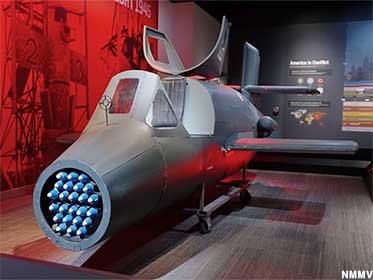
The Nazi Natter was the world's first piloted rocket.
The U.S. Army M3 tank, for example, isn't showcased to talk about its engine displacement; it's there to recall that even near-misses from German artillery would turn its primitive armor into GI-killing shrapnel. On Pacific islands, tanks were converted into flame throwing "Satans" to incinerate suicidal Japanese; Higgins boats were replaced with Landing Vehicle Tractors to get over deadly coral reefs. In each case, American ingenuity and manufacturing prowess rapidly supplanted the failed vehicles with new ones that got the job done.
Dan felt that he couldn't engage the public by simply sticking a bunch of olive-drab trucks and tanks in a building. So the galleries in his museum have full-size dioramas with soldier mannequins, dramatic lighting, video projections, and sound effects. Bombers fly overhead, walls fill with waves of Huey helicopters, snow flies as Marines retreat toward the 38th Parallel, a Viet Cong guerrilla pops out of a jungle tunnel. "I wanted to punch up the presentation," said Dan. "I wanted visitors to feel what it would have been like to be a 19- or 20-year-old in combat."
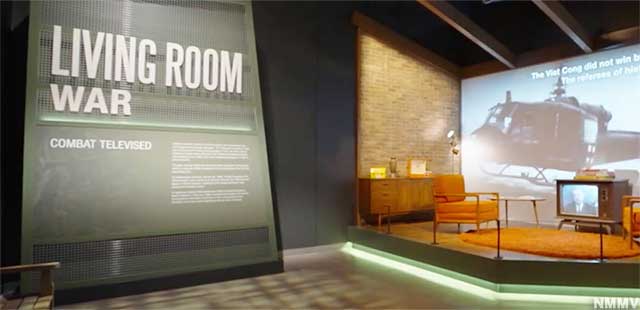
Walter Cronkite on the television brought the Vietnam War to America's suburbs.
The museum focuses mostly on America's battlefronts from the 1940s to the 1970s. It tells war stories with two different endings: 1) we beat the Nazis and Japanese because we out-vehicled them, and 2) our superiority in vehicles wasn't enough to kick the commies out of Korea or Vietnam (And at the end of the latter war we dumped a number of those vehicles into the sea). From the relatively upbeat days of WWII, the museum ends with somber topics such as PTSD and Agent Orange.
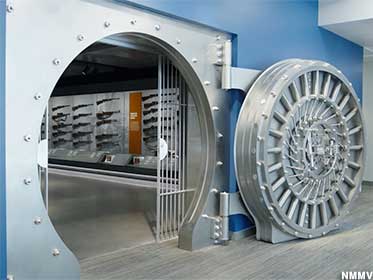
Vault protects the museum's weapons from mechanized assault.
To complement the vehicles, Dan collected an arsenal of military flamethrowers, grenade launchers, etc. Almost all of them still work. Dan was worried, he told us, that someone might drive a front-end loader -- or possibly a commandeered tank -- through the wall of his museum and steal the deadly weapons, so he ordered the construction of a vault with reinforced walls a foot thick and a giant multi-ton door worthy of a Hollywood version of Fort Knox. Visitors can walk inside and see, through armored glass, the musket that fired the first shot of America's Revolutionary War; a rifle used by a Lakota war chief at Custer's Last Stand; and a submachine gun hidden inside a briefcase, the barrel aimed through an inconspicuous hole in the front edge, the trigger hidden in the handle. Why, we asked, would anyone need such a weapon? "Covert action," answered Dan. "You can have machine gun rounds coming out of that briefcase while you're walking down the street wearing a business suit."
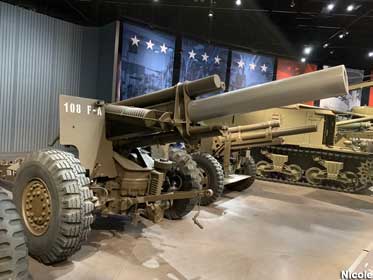
Field artillery: one of the many vehicles of war.
The museum displays other oddities as well, such as a 1916 Dodge car that became America's first motorized military vehicle when a young George Patton used it to ambush Mexican revolutionaries; a Vietnam "Rolling Thunder" gun truck armored and ironclad by its soldiers for their own survival; and a Nazi-era Natter, the world's first piloted rocket, which killed the only person foolish enough to take off in it.
Dan is a busy guy, but he said that he tries to be at the museum as often as possible, usually on Saturdays. If you're lucky enough to meet him he may let you climb into one of his tanks. There's a lot to see indoors, but many more of his vehicles are on display outside the museum, awaiting restoration. Dan has his own machine shop with a full-time staff of eight mechanics because, he said, military vehicles that run this morning may break down this afternoon. Tank rides for visitors are a treat when the museum hosts public events.
We recalled a conversation that we'd had with Bill Gasser at the AAF Tank Museum, who said that he sometimes wondered why he hadn't collected something less demanding, like stamps. Dan Starks said that he sympathized, but personally had no regrets. "I'm lucky enough to be in a position to do this, that's how I think about it," he said. "If my money and health holds out, I'll add another building and go on with the storytelling."





